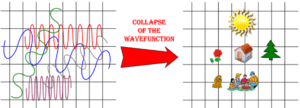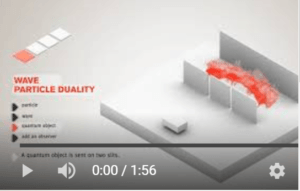Understanding the Measurement Problem requires understanding the unique role of measurement in quantum mechanics. The entry for measurement describes this role in some detail. The Measurement Problem is, broadly speaking, that we don’t know what triggers a quantum superposition to fall out of


“But, of course, the [quantum] theory is fundamentally incomplete unless we are able to say what is that something that collapses the wave function. In other words, what is it that makes the macroscopic world, sitting on top of all this weird quantum stuff, appear classical, either-or, well-behaved, solid (kind of), instead of being an entangled mess of head and tail coins and dead and alive cats?”
The mention of “dead and alive cats” is a reference to the Schrodinger Cat Experiment.

The original interpretation of quantum mechanics and, to this day, one of the most accepted, is the Copenhagen Interpretation. This is the interpretation most often taught in universities. Within the Copenhagen Interpretation, the Measurement Problem creates riddles with no solutions. The riddles are: 1) What triggers the wave to collapse down to a particle? What is the exact mechanism of collapse? And how can it be described mathematically? 2) What causes the particle to choose a particular property, such as a particular position in a superposition of positions, rather than another? Other interpretations, such as the Transactional Interpretation, solve part of these riddles. And some interpretations, like the De Broglie-Bohmian and Many Worlds, maintain that wave function collapse does not even occur.
In the Copenhagen Interpretation, the Measurement Problem arises from the Schrodinger Equation. When the Schrodinger Equation is solved, the answer is not a number but another equation called the “wave function.” The wave function describes an evolving wave. At no point does the wave function describe transformation of the wave to a particle. Yet, we know, that upon measurement, we will find not a wave, but a particle.
The wave function tells us the probability of where we will detect the particle. Though the wave function omits description of the transformation from wave to particle, it is accurate in predicting the collection of resulting positions in which particles are found in the course of many runs of the experiment.
Mathematically, the moment of measurement is the moment in which the wave function “collapses.” The mathematical description of wave function collapse is that the probability of finding the particle (in this case a photon) where it was detected goes to 100% and the probabilities of finding it in all other positions fall to zero.
